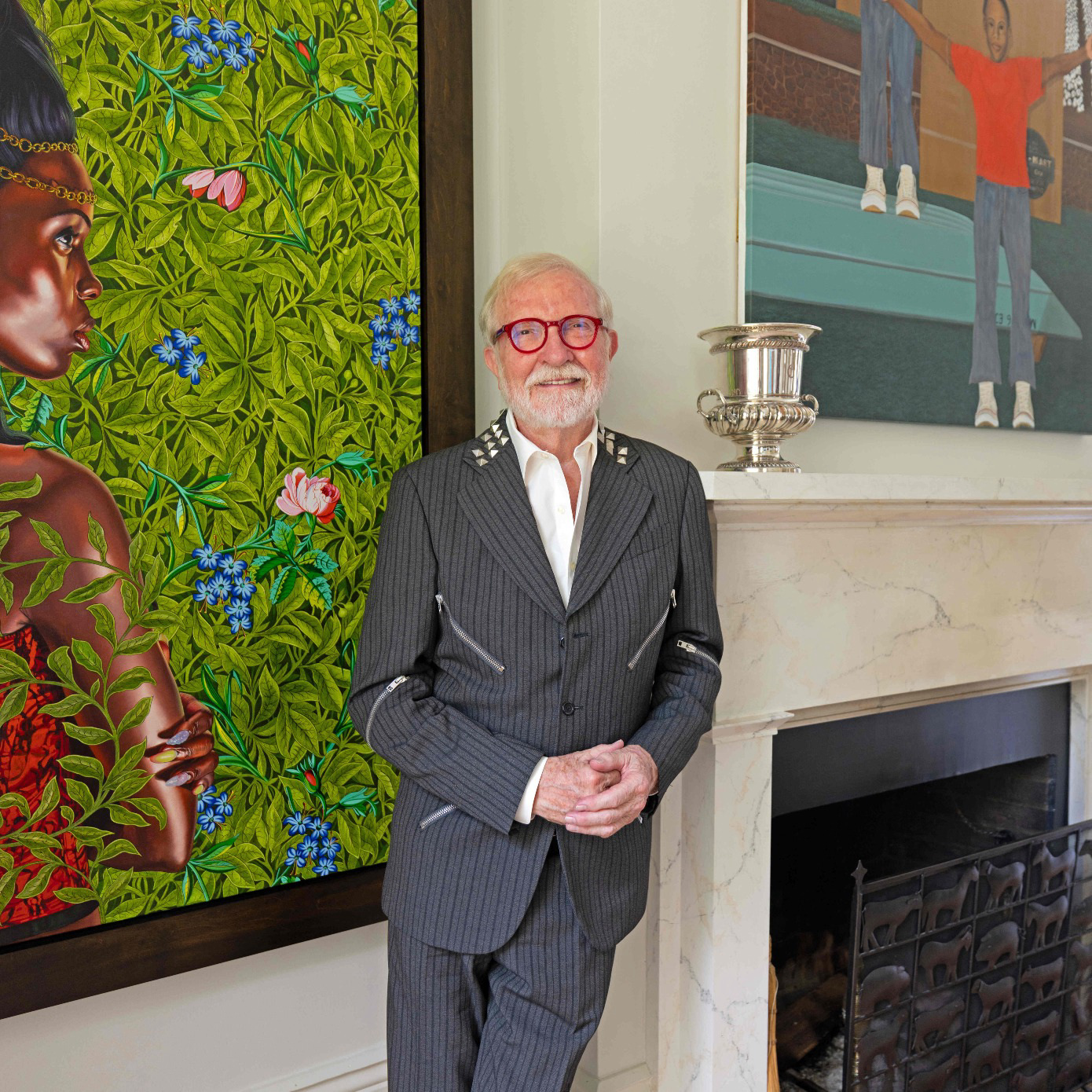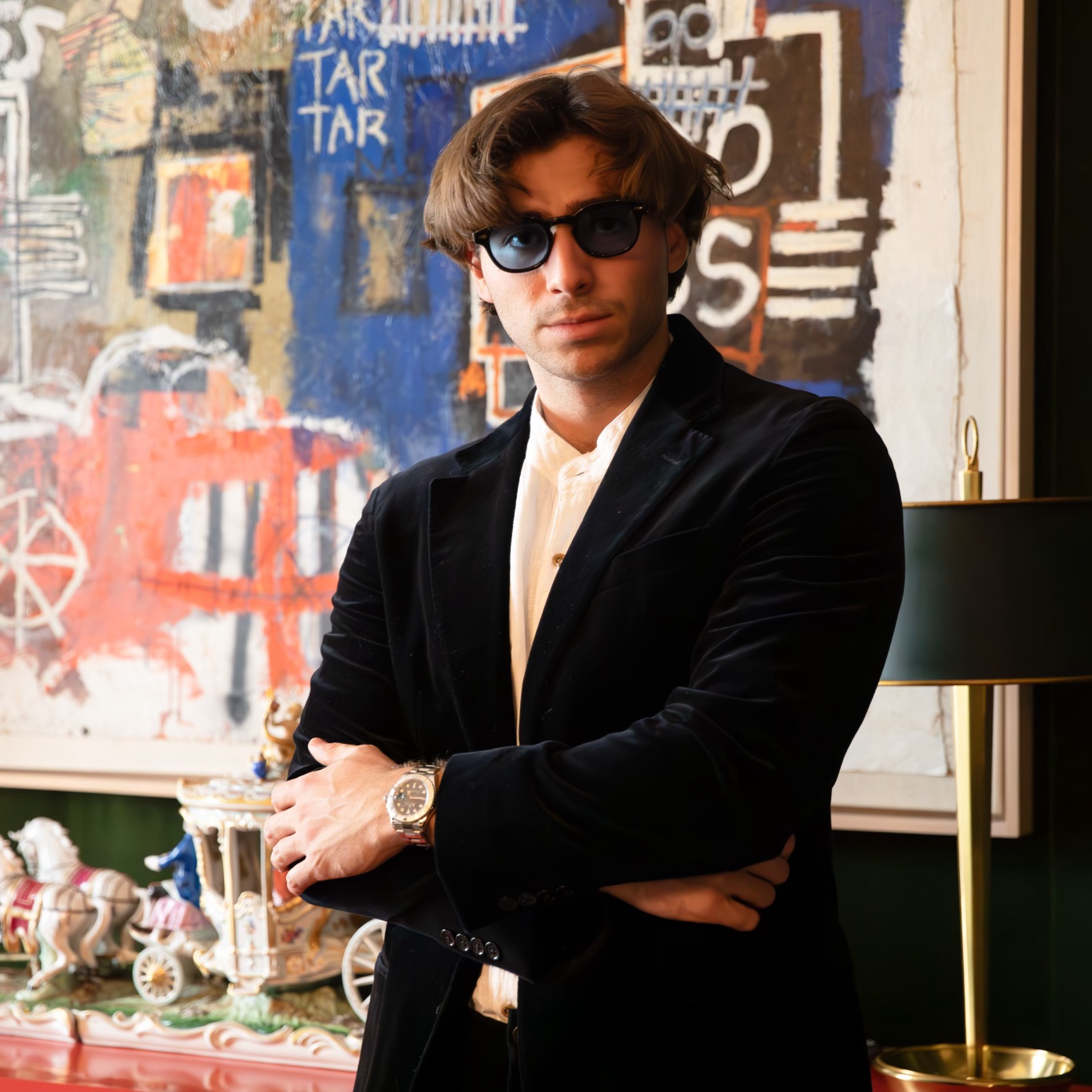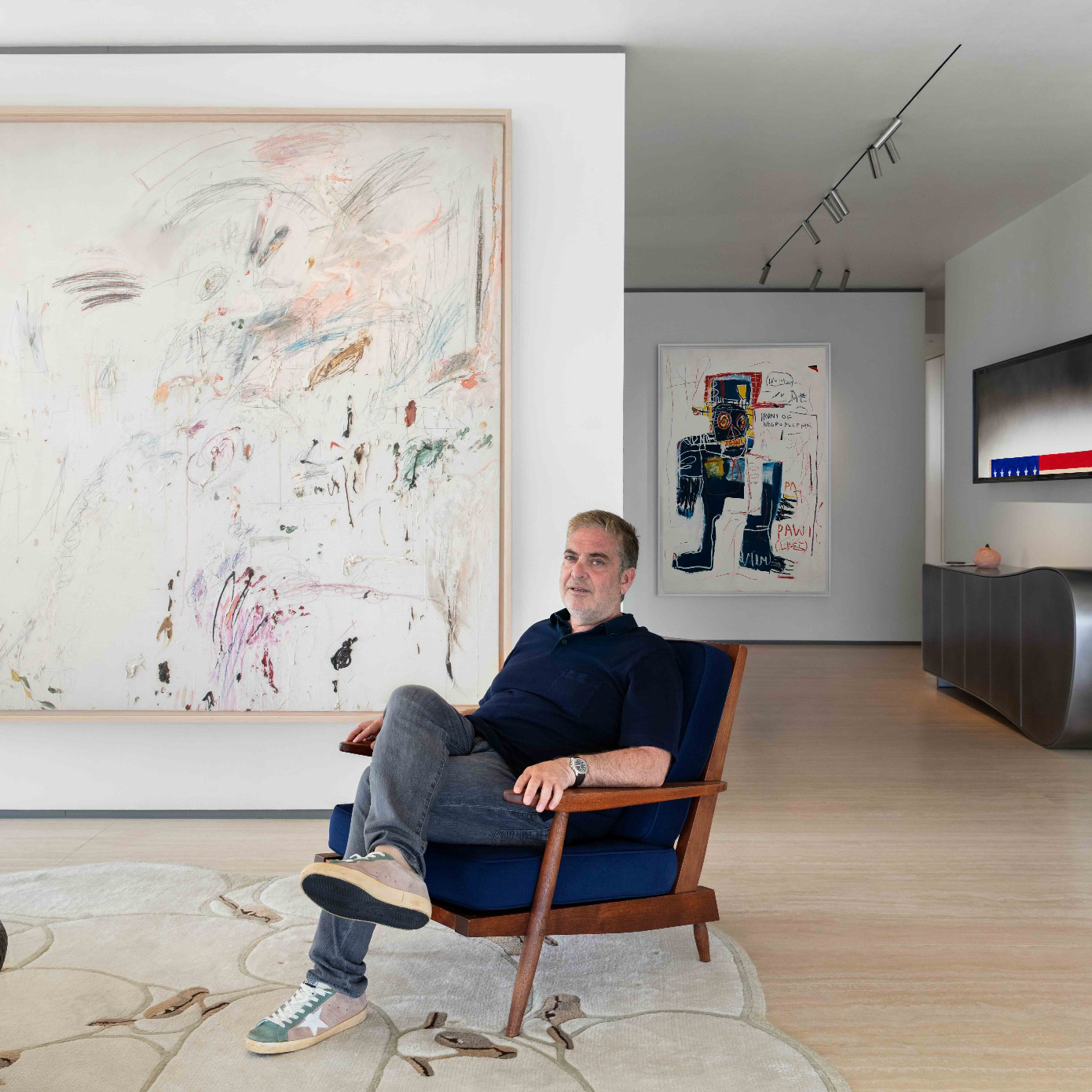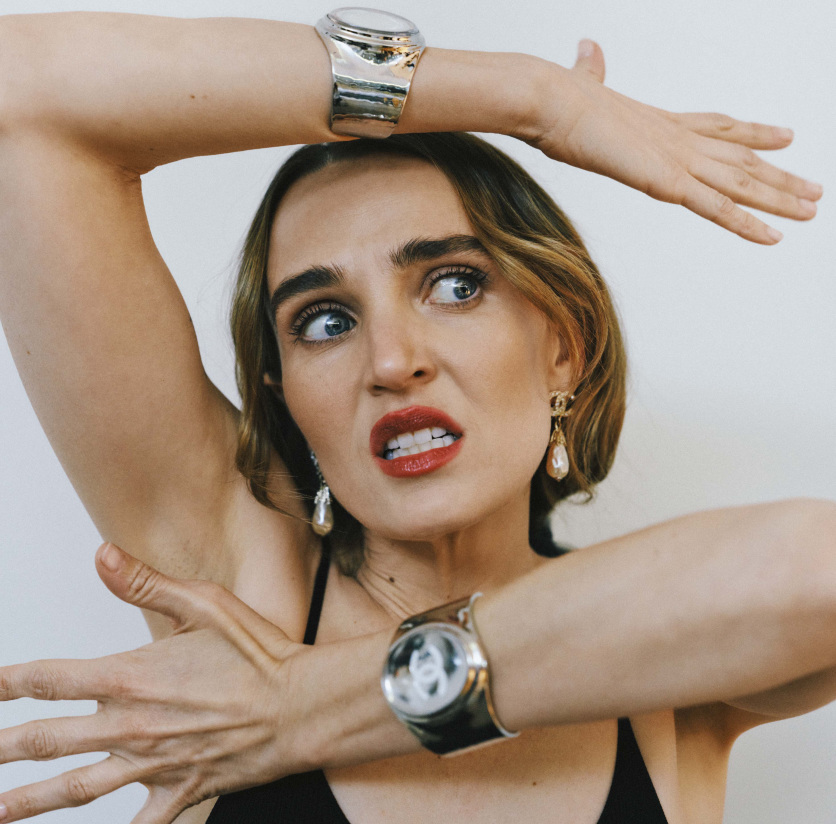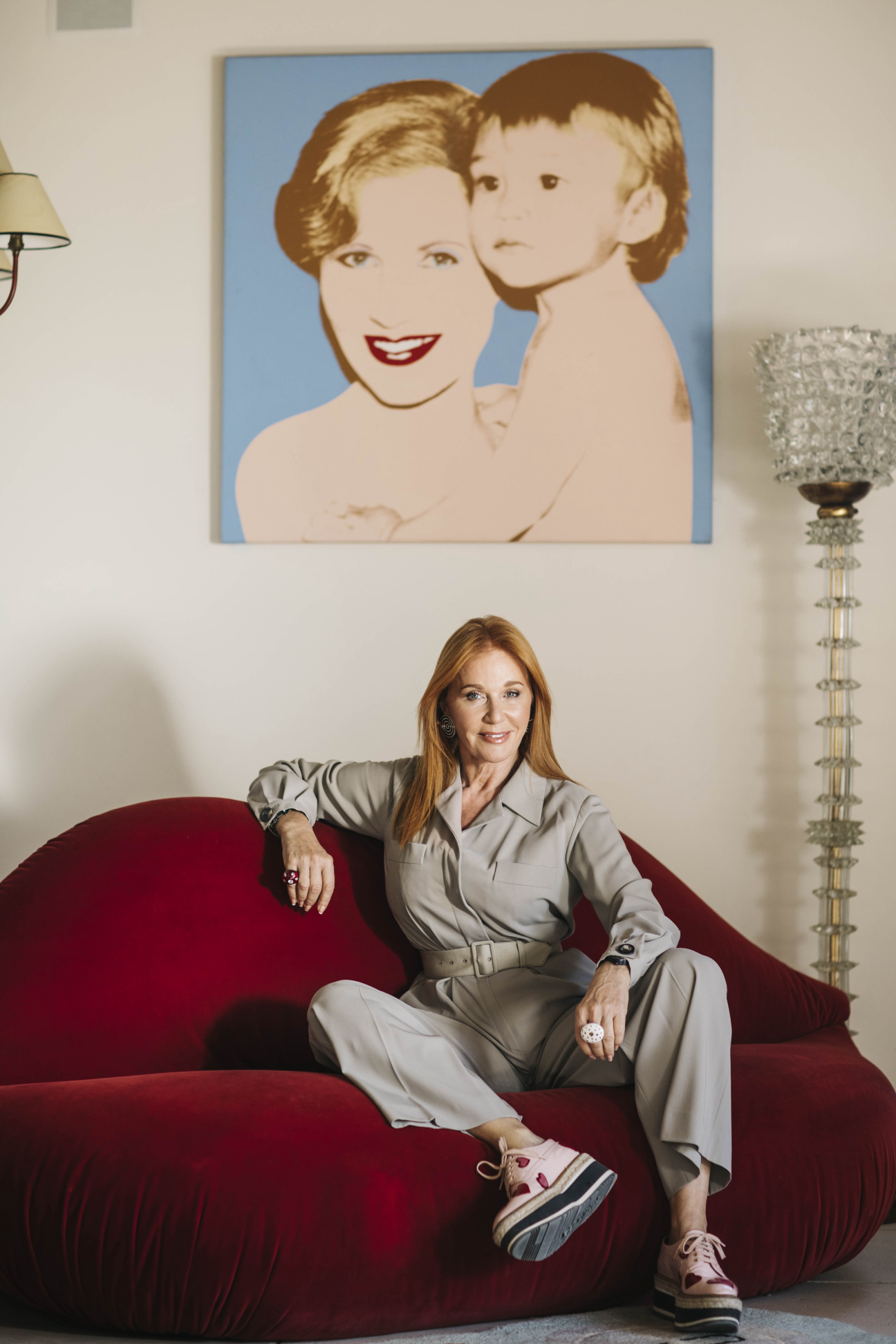
Over its 45-year history, with outposts as far flung as Miami, Hong Kong, Paris, and soon Qatar, Art Basel has emerged as a premiere platform for contemporary artists—but former jewelry designer Suzanne Syz has been attending the original Basel edition ever since it was what New York Times critic Hilton Kramer once called a “mammoth indoor ‘flea market’ of 20th century art.”
These days, it’s easy to feel overwhelmed by the bustle—and, dare we say, hype—of the fair, but Syz says it’s important to keep a classically Swiss cool head. Her gut instincts and longtime collaboration with curator Nicolas Trembley have helped Syz gather an idiosyncratic collection of everything from 1980s New York icons like Barbara Kruger and Julian Schnabel to local icons like Olivier Mosset and Peter Fischli. The pieces adorn her homes in Geneva, Paris, and Tuscany, but much of the collection is housed in “the bank”—the Geneva headquarters of her financier husband, Eric Syz's, Syz Group.
Her advice for Basel? Skip the lines, and look for the young upstarts. Each year, Syz finds herself lingering around the Statements section where Art Basel features a host of artists making waves. This keen and trend-averse eye has served the collector well, even as she organically picks up pieces from some of the art world's foremost stalwarts. Ahead of the fair's opening day, Syz invited CULTURED inside her Geneva home for a tour of her space and the scene that surrounds it.
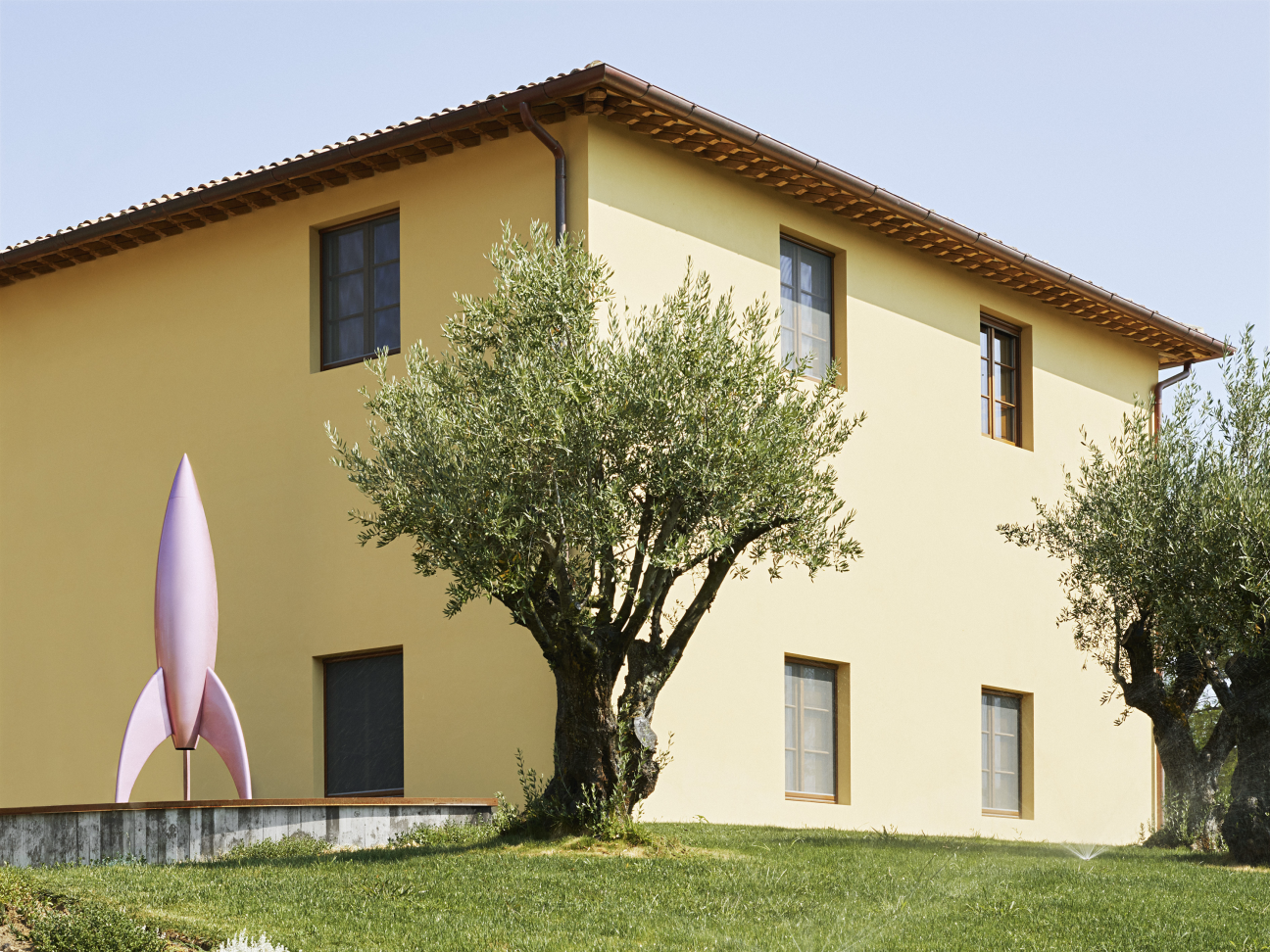
What do you think makes the Swiss art scene distinct?
It’s a mix of discretion and depth. The Swiss don’t shout—we prefer precision, nuance, and quality. There’s also an incredible support system here with good schools like Head or Ecal. Institutions like Kunsthalle Zürich or the MAMCO in Geneva are smart and radical in their programming. We have good dedicated collectors and strong galleries and the best art fair in the world!
Where does the story of your personal collection begin?
In New York in the '80s. I was living there and constantly around artists like George Condo, Julian Schnabel, or Jean-Michel Basquiat. There was this electric, unfiltered energy in the air. My first acquisitions weren’t strategic; they were emotional. I didn’t think of myself as a “collector.” I was just building a world around me that reflected my curiosity.
You’ve been going to Art Basel for decades. What are your top tips for navigating the craze?
Arrive early, don’t wear heels, and don’t get seduced by the booths with the longest lines. Some of the best things are tucked away in the quieter corners or in the Statements sections. And if you’re buying, move quickly, but only if your gut tells you to. No spreadsheet will help you fall in love with a piece.
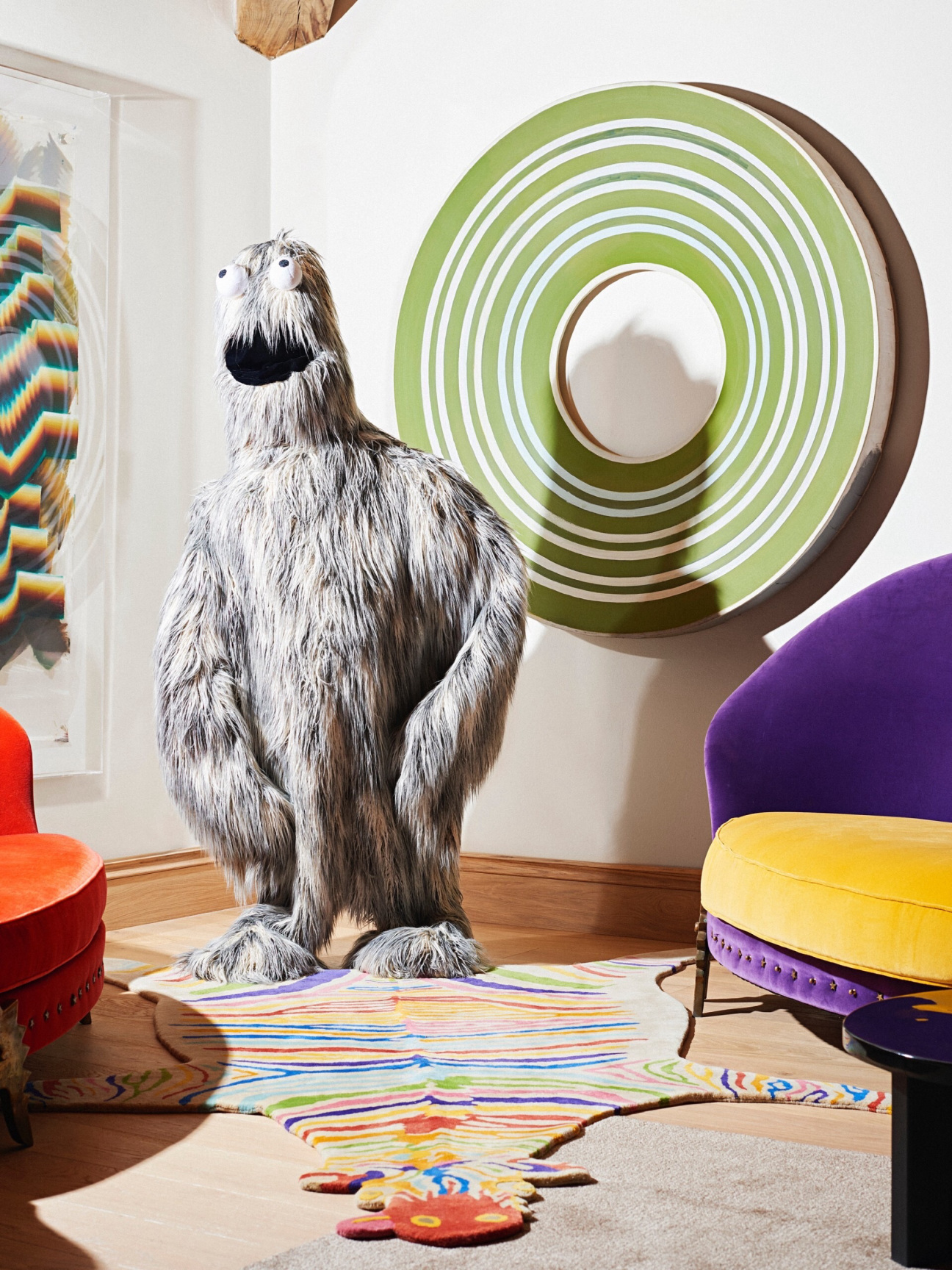
Which work in your Geneva home provokes the most conversation from visitors?
Definitely the frog by Martin Kippenberger! It’s hanging on a crucifix, holding a beer in one hand and an egg in the other. People don’t know whether to laugh, be shocked, or ask if it’s a joke. And that’s exactly why I love it. It’s provocative, irreverent, and full of layers like so much of Kippenberger’s work. For me, it’s not about being controversial for the sake of it—it’s about asking uncomfortable questions in unexpected ways.
Which artist are you currently most excited about and why?
Right now, I’m fascinated by Charline von Heyl. Her work is bold, intelligent. It resists easy interpretation, and I love that. She creates these layered, graphic compositions that feel almost like visual puzzles. You can’t pin them down, and that’s exactly what keeps me coming back to them. I’ll admit, I don’t have a piece yet. They’re getting expensive, and I’ve missed the moment a few times, but I’m watching closely. Sometimes the chase is part of the pleasure.
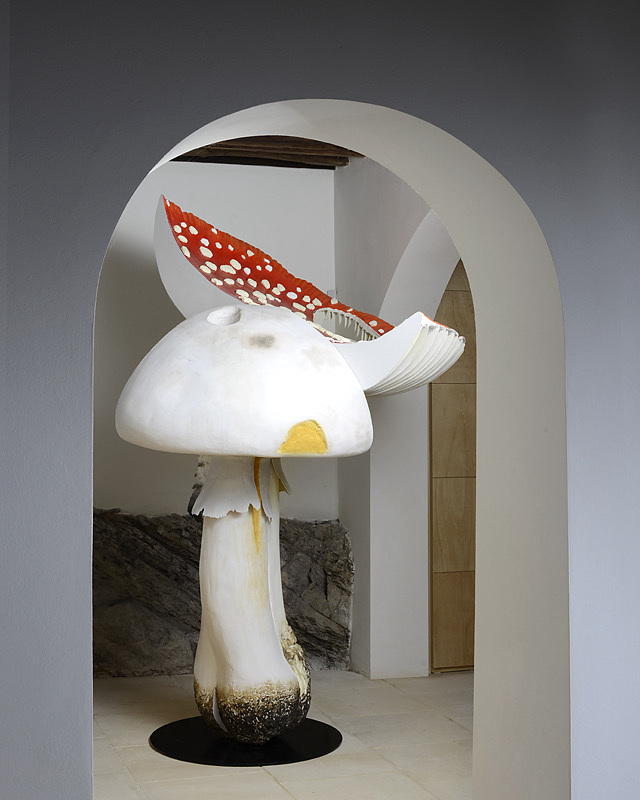
What factors do you consider when expanding your collection?
Emotion first, then curiosity. I’m not interested in trends, blue-chip trophies, or what other collectors are buying. What matters to me is whether the artist has a voice: a real, personal language that you can’t quite explain but you feel. That said, I don’t do this completely alone. I work closely with our curator Nicolas Trembley, who brings structure and vision to the collection. He helps me think about long-term coherence, the dialogues between works. It’s a balance between instinct and intention.
What are the must-see shows this month?
I’m really looking forward to the Basel Social Club. It’s fun, young, and has this informal energy that’s a nice contrast to the main fair. It’s not just about the art—it’s also about the people, the conversations, the setting. And I’m planning a trip to Luma Arles. I want to see the Peter Fischli exhibition this summer. What Maja Hoffmann has done with Luma is incredible. It’s not just a cultural space; it’s a statement. She has a bold, generous vision and a real dedication to supporting artists in ways that go beyond the usual formats.
Do you collect anything other than art?
Oh yes, I collect furniture and design objects, especially pieces that play with scale, materiality, and a sense of humor. I’ve always been drawn to things that challenge our expectations. I designed the Syz bank headquarters in Geneva and Zurich. I didn’t want those spaces to feel cold or corporate. I wanted them to be living environments, bold, elegant, and full of unexpected details. We used materials in unusual ways, mixed periods, and brought in works that invite conversation. For me, design isn’t about showing off, it’s about creating an atmosphere that reflects curiosity, care, and a bit of mischief.
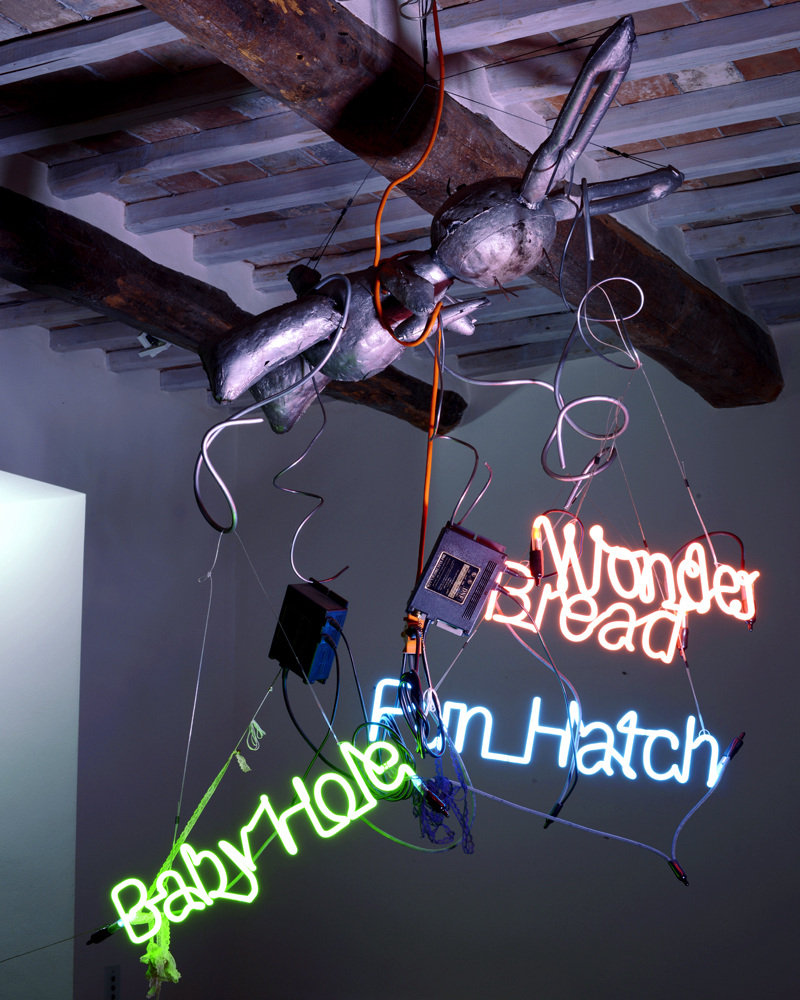
What is the strangest negotiation you've ever had with an artist or dealer?
Without a doubt, my portrait session with Andy Warhol. I had asked him to do a portrait of me with my son, and when he showed me the result, I was horrified—I didn’t recognize myself at all. I looked stiff, uptight… nothing like how I felt or wanted to be seen. But Andy was at the absolute peak of his fame. I didn’t know how to tell him directly, but I did. Still, he must have sensed something because a few weeks later, he called and said, “Come by, I’ve done a few more.”
He had made three new portraits, totally different: relaxed, lively, full of energy. And then he said, “Take them all.” So I walked out with three Warhols for the price of one. That’s the kind of story you can’t invent and one of the reasons I always say collecting is as much about people as it is about objects.
What piece of advice would you give someone who wants to get into collecting?
Don’t try to impress anyone. Buy what moves you. And live with it—the relationship with an artwork evolves over time. You’ll learn more from a single mistake than from 10 perfect purchases.
Every collector has made a rookie mistake or two. What was your most memorable?
Buying something just because everyone else wanted it. It arrived, I hung it, and… silence. No joy. No spark. I sold it a year later. Since then, I’ve trusted only my intuition.

